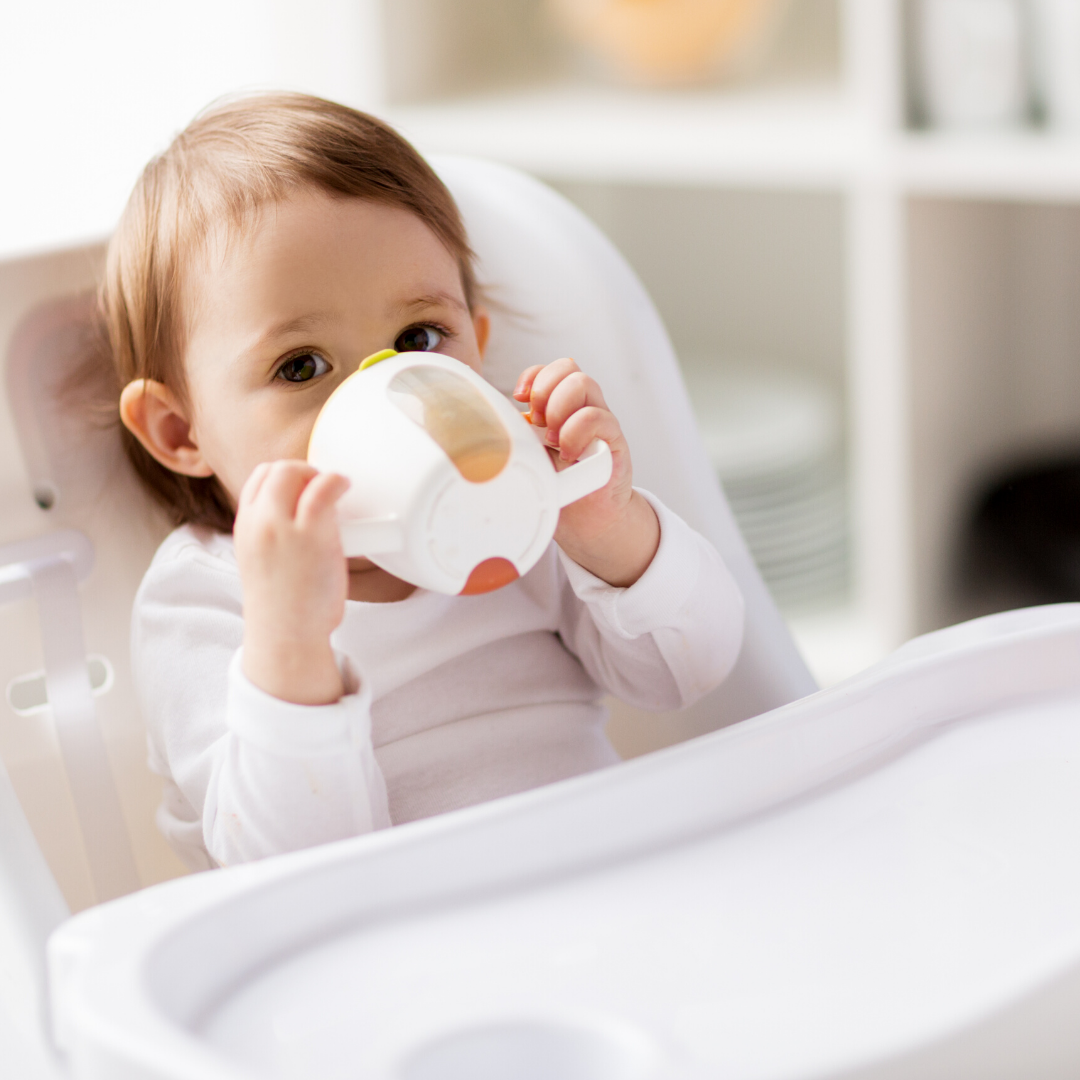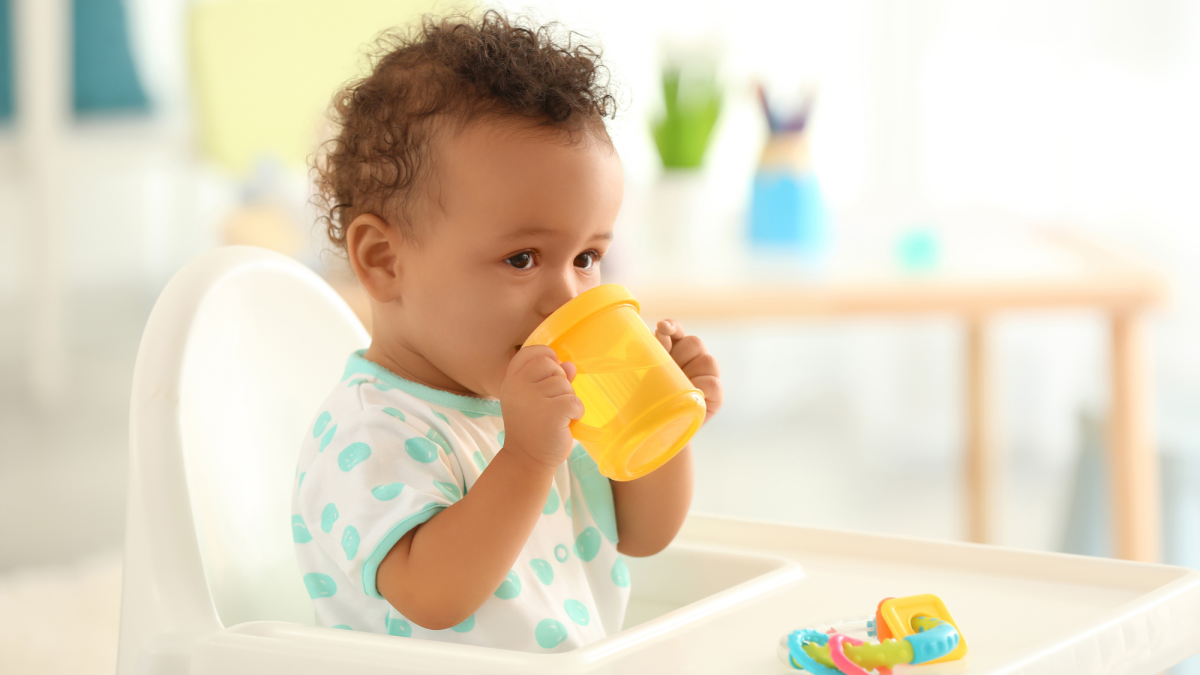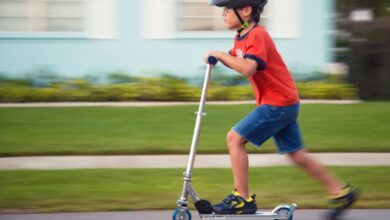
Bottle to sippy cup: Navigating this crucial stage in your child’s development can be a rewarding experience. This guide provides a comprehensive overview of the transition process, from understanding the ideal age range to exploring different sippy cup styles, benefits, and challenges.
The journey from bottles to sippy cups is a significant milestone for both parents and children. It marks a shift from dependent feeding to a more independent drinking style. This article will delve into the various aspects of this transition, ensuring you have the knowledge and tools to make the process smooth and positive for your little one.
Transitioning from Bottle to Sippy Cup

The transition from a bottle to a sippy cup is a significant milestone in a child’s development, marking their growing independence and readiness for different feeding methods. This shift often coincides with a child’s increasing ability to manage more complex textures and control their drinking movements. Understanding the typical age range, available sippy cup types, and appropriate transition methods can make this process smoother and more enjoyable for both the child and parent.
Typical Age Range for Transition
Children typically begin to show readiness for sippy cups between 6 and 18 months of age. This age range is not a hard and fast rule, as each child develops at their own pace. Factors like the child’s physical abilities, dexterity, and interest in different feeding methods play a significant role. Parents should observe their child’s cues, such as the ability to hold and manipulate the cup, and their willingness to try new feeding methods.
A gradual approach, observing the child’s comfort and abilities, is generally recommended.
Types of Sippy Cups
A wide variety of sippy cups are available in the market, each with unique features and functionalities. These cups cater to different developmental stages and feeding preferences. Understanding these types can help parents select the most appropriate cup for their child’s needs.
- Soft-Sided Sippy Cups: These cups often have a soft, flexible material that conforms to the child’s mouth, making them easy to grasp and control. The design often includes a valve or spout to prevent spills. They are commonly used for younger children, as they are generally easier to maneuver and manage.
- Hard-Sided Sippy Cups: These cups are typically made from a rigid plastic material, offering greater durability and a wider range of designs. Features like different handle types and spout configurations make them suitable for children as they grow and develop greater dexterity.
- Sippy Cups with Straws: Straw cups provide a more advanced drinking method, encouraging children to develop their sucking and drinking skills. They typically have a wide opening or a straw-shaped opening for the child to control. This type is suitable for children who are ready to use a straw for drinking.
- Spill-Proof Sippy Cups: These cups are designed to minimize spills and leaks, making them a popular choice for parents. They often incorporate specialized valves or closures to contain the liquid. They are often used to provide a transition between bottle and regular cups.
Transition Methods
The method of transitioning from bottles to sippy cups can significantly impact the child’s experience. Gradual transitions, where the child is slowly introduced to the sippy cup while still having the bottle available, are often considered more successful than sudden transitions. Parents should monitor the child’s progress and be prepared to adjust their approach as needed.
- Gradual Transition: This method involves gradually introducing the sippy cup while allowing the child to continue using the bottle. The sippy cup can be presented during mealtimes or snacks, allowing the child to experiment with it alongside the bottle. This approach often reduces resistance and allows the child to adjust at their own pace. Parents should not force the child to use the sippy cup immediately.
- Sudden Transition: This method involves removing the bottle entirely and immediately introducing the sippy cup. This method can be challenging for some children and may lead to resistance and frustration. It is often less effective than a gradual transition.
Sippy Cup Comparison Table
| Cup Type | Age Range Suitability | Material | Key Features |
|---|---|---|---|
| Soft-Sided | 6-12 months | Silicone, Soft Plastic | Easy grip, spill-proof valves |
| Hard-Sided | 12-24 months | Durable Plastic | Variety of handle types, wider range of designs |
| Straw | 12+ months | Plastic, Silicone | Encourages sucking and drinking skills |
| Spill-Proof | 6-24 months | Plastic, Silicone | Reduced spills and leaks, easy transition |
Sippy Cup Design Considerations, Bottle to sippy cup
The design of sippy cups plays a crucial role in the child’s acceptance and usage. Factors like the opening size and handle style should be considered.
- Wide vs. Narrow Openings: Wide openings are generally easier for younger children to manage, reducing the risk of spills and making it easier for them to grasp the cup. Narrower openings can help develop finer motor skills in older children.
- Handle Styles: Different handle styles cater to different grip preferences. Some handles are designed for a more secure grip, while others are simpler and easier to manipulate. The handle design should be considered in conjunction with the child’s hand size and grip strength.
Benefits of Using Sippy Cups: Bottle To Sippy Cup
Sippy cups represent a significant step in a child’s feeding journey, transitioning them from the bottle to more independent drinking. Beyond convenience, sippy cups offer a range of developmental and practical advantages. They are designed to encourage better oral motor skills, easier cleaning, and a smoother transition to using utensils.Sippy cups are designed to make drinking easier for infants and toddlers, fostering independence and encouraging healthy eating habits.
These cups are instrumental in promoting crucial oral development, helping little ones build the necessary muscle control and coordination needed for effective swallowing and chewing. The gradual progression from a bottle to a sippy cup facilitates this crucial development.
Oral Development and Motor Skills
Sippy cups, with their unique design, encourage a more controlled flow of liquids. This controlled flow helps develop crucial oral motor skills, including lip closure, tongue movements, and jaw strength. Infants and toddlers learn to manipulate the cup to control the flow of liquid, which is essential for developing proper swallowing techniques. A controlled intake helps avoid choking or gagging.
This improved control translates into improved swallowing and better oral hygiene, helping prevent cavities and tooth decay.
Hygiene and Ease of Cleaning
Sippy cups, with their often-spout-based design, are easier to clean than bottles. The smaller parts and streamlined shapes facilitate a thorough cleaning process, minimizing the risk of bacterial growth and reducing the potential for hidden food particles. The easy-to-clean nature of sippy cups promotes better hygiene, contributing to a healthier oral environment for growing children.
Comparison of Sippy Cups and Bottles
| Feature | Sippy Cups | Bottles |
|---|---|---|
| Oral Motor Development | Encourages controlled liquid intake, improving lip closure, tongue movement, and jaw strength. | Can lead to less controlled liquid intake, potentially hindering the development of crucial oral motor skills. |
| Swallowing | Promotes proper swallowing mechanics by requiring a more controlled flow of liquid. | May lead to a less coordinated swallowing pattern. |
| Hygiene | Easier to clean, minimizing bacterial growth and reducing the potential for hidden food particles. | More complex to clean thoroughly, potentially harboring more bacteria. |
| Transition to Utensils | Helps children develop the fine motor skills needed to use utensils for meals. | May not offer the same support for transitioning to utensils. |
Preparation for Using Utensils
Sippy cups, with their controlled pouring mechanism, encourage the development of fine motor skills in the mouth and hands. This practice strengthens hand-eye coordination and dexterity, both of which are vital for mastering the use of utensils during mealtimes. A child who has practiced using a sippy cup has an advantage when transitioning to spoons and forks. The controlled drinking practice mirrors the controlled motions required for using utensils, making the transition more seamless.
Challenges and Considerations During Transition

Making the switch from bottle to sippy cup can be a bumpy ride for both parents and little ones. It’s a significant developmental leap, and understanding the potential hurdles can help navigate the process more smoothly. While the benefits of sippy cups are clear, anticipating and addressing potential challenges is key to a successful transition.Successfully transitioning a child from a bottle to a sippy cup often hinges on patience, persistence, and a flexible approach.
Different children will respond to various strategies differently. Understanding what might cause resistance and how to approach these issues can help to make the entire process a more positive experience for both parent and child.
Common Parental Challenges
Parents often face several hurdles during this transition. These challenges can range from the practical to the emotional. Understanding these difficulties is the first step towards overcoming them.
- Resistance from the child: Children are often attached to their bottles, viewing them as a source of comfort and familiarity. This attachment can manifest as resistance to the sippy cup, leading to frustration and tantrums. For instance, a child who has relied on a bottle for feeding, comfort, and even entertainment might find the sippy cup less appealing.
- Difficulties with cup usage: A child might struggle to control the flow of liquid from the sippy cup, leading to spills and frustration. Learning to manipulate the cup and drink from it without excessive mess is a developmental skill that some children take longer to master than others. This can cause parents to feel exasperated.
- Time commitment and persistence: The transition from bottle to sippy cup can take time and multiple attempts. Parents may encounter setbacks and feel discouraged if the child initially rejects the sippy cup. The journey is often not linear, and patience is key.
Strategies for Overcoming Challenges
Effective strategies can significantly improve the transition process. Emphasizing positive reinforcement and understanding the child’s perspective are essential.
- Gradual introduction: Introduce the sippy cup gradually, perhaps by offering it alongside the bottle during feedings. This gradual integration can help the child adjust more easily to the new utensil. For example, a child might be offered a sippy cup for water during the day while continuing to use the bottle for formula at bedtime. Gradually increasing the amount of time the child uses the sippy cup can make the transition less abrupt.
- Positive reinforcement: Acknowledge and praise any attempts at drinking from the sippy cup. Small victories should be celebrated to encourage the child and maintain a positive association with the cup. A simple “good job!” or a small reward can make a big difference. For instance, a child who successfully drinks from the sippy cup for 10 minutes might be rewarded with a special treat.
- Making it fun: Transform the sippy cup experience into a fun activity. Engage the child with different types of sippy cups or by using colorful straws or cups. For example, playing a game while offering sippy cups, or letting the child choose from a selection of cups, can make the experience more appealing. This also reduces the negative association with the sippy cup, making it more likely to be accepted.
Addressing Child Resistance
Children’s resistance is a common occurrence during this transition. Understanding the root causes and implementing appropriate strategies can significantly ease the process.
- Exploring underlying reasons: Determine if the resistance stems from a need for comfort, a fear of the unknown, or simply a preference for the bottle. Understanding the reason for the resistance can help tailor the approach. For instance, a child might be resisting the sippy cup because it doesn’t provide the same level of security as a bottle, or because they feel that the sippy cup is not as effective as a bottle in satisfying their need for comfort.
- Encouraging acceptance: Offer the sippy cup in a relaxed and encouraging environment, avoiding pressure or forcing the child. Creating a positive association with the sippy cup is crucial. For example, allowing the child to choose their own sippy cup design can increase their interest and engagement.
- Creating a positive experience: Focus on making the transition positive, rewarding small successes, and celebrating progress. This positive reinforcement helps build confidence and encourages continued use of the sippy cup. For example, if the child successfully drinks from the sippy cup for 5 minutes, a positive comment from the parent, like “Wow, you’re doing great!” can significantly increase the child’s motivation.
Transitioning from a bottle to a sippy cup is a big milestone for little ones, and as they grow, understanding nutrition labels becomes equally important. Recent changes to nutrition labels, like those discussed in this article about new nutrition labels help you eat less , can make a real difference in portion control and healthy eating habits. This can be seamlessly integrated into the process of teaching your child about healthy choices, as they move from bottle to sippy cup, and beyond.
Types and Styles of Sippy Cups
Choosing the right sippy cup can be a game-changer during the transition from bottle to cup. Different designs cater to various developmental stages and preferences, offering advantages and disadvantages. Understanding these options empowers parents to make informed choices that support their child’s independence and comfort.Sippy cups are available in a wide array of styles, each with unique features designed to facilitate the transition to independent drinking.
By considering the materials, sizes, shapes, and special features, parents can select the best option to fit their child’s needs and developmental stage.
Transitioning from a bottle to a sippy cup is a major milestone for little ones, and it often coincides with a child’s growing independence. Think about how much easier it is for a toddler to drink on their own with a sippy cup, as opposed to needing help from a parent to hold a bottle. This transition can be a big step forward for a child’s development, and even stars like actress model anita nicole brown likely experienced similar milestones in their own childhoods, too! It’s a small step, but it’s a significant one in a child’s development journey.
This marks a step toward self-sufficiency in feeding.
Sippy Cup Types and Features
Different sippy cup designs offer varying levels of support and challenge for a child’s developing motor skills. Understanding the nuances of each type can guide parents in choosing the best fit for their child.
| Sippy Cup Type | Features | Pros | Cons | Recommended Age Range |
|---|---|---|---|---|
| Open-Spout Sippy Cups | Wide, open spout for easy access to liquid. Often have a slightly raised lip to prevent spills. | Easy for little hands to grasp and maneuver. Often promotes self-feeding skills. | Higher risk of spills and leaks. May not be suitable for children with a strong tendency to over-tip the cup. | 12-18 months |
| Straw Sippy Cups | Feature a straw for controlled sipping. Often have a valve to prevent leakage. | Encourage controlled drinking and reduce spills. Many offer leak-proof designs. | Can be more difficult for younger children to master. May require more practice for effective use. | 18 months and up |
| Valved Sippy Cups | Have a one-way valve that prevents leakage. Various spout styles are available. | Excellent for travel and portability. Minimizes mess and spills. | Can be more expensive than other types. The valve may require cleaning and maintenance. | 12-24 months and up |
| Easy-grip Sippy Cups | Ergonomically designed handles for better grip and stability. | Enhance a child’s ability to control the cup. Reduces the risk of dropping the cup. | May be bulkier than other styles. | 12 months and up |
Material Comparison
The material of a sippy cup significantly impacts its durability, safety, and environmental impact. Understanding the differences between common materials is crucial for selecting the best option.
Transitioning a baby from a bottle to a sippy cup is a significant milestone, but it’s important to remember that significant societal changes can also impact health. For example, the impact of policy decisions, like those made in Trump’s first three years, can have devastating consequences. Sadly, in Trump’s first three years, two million Americans lost healthcare coverage and thousands died prematurely.
This underscores the importance of careful consideration when making choices about a child’s health and well-being, just as parents carefully navigate the bottle to sippy cup transition.
- Plastic: Common and often affordable. May contain BPA, so look for BPA-free options. Generally durable but can be prone to scratches.
- Silicone: BPA-free and often more flexible. Resistant to spills and breakage. Can be more expensive than plastic.
- Stainless Steel: Durable and BPA-free. Often considered the most hygienic option, but can be more expensive and heavier than other materials.
Size and Shape Considerations
The size and shape of the sippy cup should align with the child’s developmental stage and drinking needs. A properly sized cup can promote independence and reduce frustration.
- Small Cups: Ideal for younger children. Smaller size makes them easier to hold and maneuver. Best for first sippy cup experiences.
- Medium Cups: Offer a balance between ease of use and increased independence. Suitable for transitioning to larger cups.
- Large Cups: Designed for older children who are ready for larger volumes of liquid. Promote independent drinking.
The shape of the sippy cup’s spout influences the drinking experience. A wide spout allows for easy access to liquid, while a narrow spout promotes controlled sipping.
Special Features
Many sippy cups come with added features to enhance usability and safety. These features can be particularly helpful in specific situations.
- Leak-Proof Designs: Valved cups and specific spout designs minimize leakage, ideal for travel or for situations where spills are undesirable.
- Travel-Friendly Cups: Compact designs, often with leak-proof mechanisms, are excellent for outings and on-the-go situations.
- Dishwasher-Safe Cups: Reduce cleaning time and effort, ensuring hygiene.
Safety and Hygiene Aspects
Choosing a sippy cup is a big step towards independence for your little one. However, ensuring the cup is safe and hygienic is paramount. Proper hygiene practices and the right safety features play a critical role in your child’s well-being. Cleanliness is key to preventing illnesses and ensuring a positive transition.
Importance of Proper Hygiene Practices
Maintaining meticulous hygiene with sippy cups is crucial for preventing bacterial growth and safeguarding your child’s health. Regular cleaning and sanitization minimize the risk of infections and ensure the cup remains a safe drinking vessel. This proactive approach protects your child from potential health issues, promoting a healthier and happier experience.
Cleaning and Sanitizing Sippy Cups Effectively
Thorough cleaning and sanitizing are essential for maintaining a hygienic sippy cup. After each use, immediately rinse the cup with warm water to remove any residue. Subsequently, use a gentle dish soap and a soft-bristled brush to scrub the cup thoroughly, paying close attention to crevices and the area around the spout. For a deeper clean, consider using a dishwasher, but always check the manufacturer’s recommendations.
Safety Features to Look For
When selecting a sippy cup, prioritize safety. Look for sippy cups made from BPA-free materials. BPA, or bisphenol A, is a chemical linked to potential health concerns. Opting for BPA-free alternatives guarantees a safer drinking experience for your child. Furthermore, inspect the cup for any sharp edges or rough textures that could injure your child.
Safety Tips for Parents
To ensure safe sippy cup use, follow these guidelines:
- Always supervise your child while they are using the sippy cup, especially during the initial transition phase.
- Ensure the sippy cup is appropriate for your child’s age and developmental stage. A cup that is too complex or too easy can pose safety hazards.
- Inspect the sippy cup regularly for any signs of damage, such as cracks or breaks. Replace the cup immediately if any damage is detected.
- Keep sippy cups out of reach of pets and other animals to prevent accidental damage or ingestion.
- Wash and sanitize the sippy cup after each use to maintain hygiene and prevent the spread of germs.
Choosing the Right Sippy Cup
Selecting the right sippy cup is critical for a smooth transition and a safe drinking experience. Consider your child’s age and abilities when making your choice. For younger children, opt for sippy cups with wider openings and secure handles. As your child grows, you can gradually move towards more advanced sippy cups with different features, such as spill-proof designs.
Observe your child’s skills and preferences to choose the best sippy cup for their specific needs.
Tips for a Smooth Transition
Making the switch from bottle to sippy cup can be a significant milestone for both parents and toddlers. It requires patience, understanding, and a strategic approach. A smooth transition minimizes stress and frustration for everyone involved, ensuring a positive experience for your child. A well-planned transition can also help establish healthy eating and drinking habits early on.This process is about gradual adaptation, not an abrupt change.
Understanding the child’s cues and respecting their pace is crucial. Each child progresses at their own rate, so be flexible and supportive. Remember, consistency and positive reinforcement are key to success.
Step-by-Step Introduction of Sippy Cups
Successfully transitioning to a sippy cup often involves a gradual introduction. Start by offering the sippy cup alongside the bottle for a period of time, allowing the child to get accustomed to the different shape and feel. This gradual introduction is a more effective approach compared to an immediate switch, reducing the chances of resistance.
- Begin by introducing the sippy cup during mealtimes or for drinks between meals, while the bottle is still readily available.
- Gradually increase the sippy cup usage, replacing the bottle with the sippy cup in different situations.
- Offer the sippy cup during playtime or other activities to help the child associate it with non-feeding times.
- Observe the child’s cues and be prepared to revert to the bottle if needed.
Strategies for Easier Transition
A range of strategies can facilitate the transition. One effective technique is associating the sippy cup with positive experiences. For instance, offer a sippy cup with a favourite beverage or during a favorite activity.
- Make the transition a positive experience. Avoid pressure or frustration. Emphasize fun and exploration.
- Offer the sippy cup with familiar or preferred beverages.
- Pair sippy cup use with enjoyable activities, like playtime or outings.
- Ensure the child feels supported and encouraged throughout the process.
Dealing with Resistance
Resistance to the sippy cup is a common occurrence during the transition period. Children may feel a sense of security or familiarity with the bottle. Patience and understanding are essential.
- Acknowledge and validate the child’s feelings. Don’t force the transition. Let them explore the sippy cup at their own pace.
- Try different sippy cup styles and sizes to find one that the child finds comfortable.
- Offer praise and encouragement for any progress, no matter how small.
- If resistance persists, consider temporarily reverting to the bottle, and then try again later.
Encouraging Positive Habits
Positive reinforcement plays a significant role in establishing healthy habits. Praising the child for using the sippy cup can create a positive association.
- Praise the child for every successful sippy cup use, no matter how small.
- Offer rewards or incentives for consistent use of the sippy cup.
- Create a positive environment surrounding the sippy cup to encourage use.
- Make the sippy cup part of the routine.
Involving the Child in the Selection Process
Involving the child in the selection process can increase their acceptance of the sippy cup. This can create a sense of ownership and control.
- Let the child choose from different sippy cup designs, colors, or characters.
- Involve the child in preparing the sippy cup, such as washing it or filling it with their favorite drink.
- Allow the child to try different sippy cup types to find one they like.
- Encourage the child to express their preferences and choices.
Alternatives to Traditional Sippy Cups
Transitioning from bottles to cups is a significant milestone in a child’s development. While sippy cups are a popular choice, various alternative methods can help children learn to drink from open cups more quickly and effectively. These alternatives can cater to different learning styles and preferences, fostering a positive and successful transition.Traditional sippy cups often have a restrictive design, which can sometimes impede a child’s natural development of independent drinking skills.
Alternative methods, often involving progressively more open-ended cup designs, can encourage the development of fine motor skills and hand-eye coordination while promoting independence. The key is to introduce these alternatives gradually and with encouragement, ensuring a smooth and enjoyable experience for both the child and parent.
Alternative Transition Methods
Several alternative methods can aid in the transition from bottles to cups. These methods involve progressively introducing wider-open cups and techniques that encourage self-feeding and independent drinking. A combination of these methods can create a more comprehensive and personalized approach for each child.
- Using Open Cups Immediately: Some children are ready for open cups from the start. They may show a preference for a cup with no special features or design, allowing them to develop hand-eye coordination and control. This approach can be beneficial for children who grasp concepts quickly and are comfortable with less structured drinking tools.
- Introducing Straw Cups: Straw cups present a good intermediate step. The suction action and wider opening provide a less restrictive approach than sippy cups. Introducing a straw cup can be beneficial for children who find sippy cups cumbersome or have difficulty coordinating the sippy spout with their mouth.
- Utilizing Regular Cups with a Wide Opening: Regular cups with a wide opening can be gradually introduced. These cups allow for more freedom of movement and can be beneficial for children who are comfortable holding the cup in their hands. The wider opening encourages a more natural drinking posture and reduces the need for a specialized spout.
Pros and Cons of Alternative Methods
Different alternative methods offer distinct advantages and disadvantages. Carefully evaluating these factors can help parents choose the best approach for their child.
| Method | Pros | Cons |
|---|---|---|
| Open Cups Immediately | Promotes immediate independence, allows natural development of hand-eye coordination. | Can be challenging for some children, may result in spills and mess initially. |
| Straw Cups | Less restrictive than sippy cups, encourages self-feeding, more comfortable for some children. | May require more practice to master, risk of spills if not handled correctly. |
| Regular Cups with Wide Opening | Develops natural drinking posture, promotes independence. | Can be challenging for children with poor hand-eye coordination, more likely to spill initially. |
Types of Cups for Alternatives
A variety of cups can be used as alternatives to sippy cups, catering to different stages of development and preferences.
- Open-ended cups: These cups are designed with a wide opening, allowing for more freedom of movement and control. This style can encourage natural drinking postures and reduce the reliance on a specialized spout.
- Straw cups: Straw cups use suction to guide the liquid into the mouth. They are a less restrictive alternative to sippy cups, providing more freedom and control. The design can be appealing to children who enjoy sucking or prefer a different method of intake.
- Regular cups with handles: Regular cups with handles offer a more familiar drinking experience. These cups provide support for the child’s hands, making it easier to control the cup and reduce the risk of spills. The familiar design can encourage a smooth transition.
End of Discussion
Successfully transitioning from bottles to sippy cups is a key step in your child’s development. By understanding the different sippy cup types, potential challenges, and strategies for a smooth transition, you can empower your child to become a confident and independent drinker. Remember, patience, consistency, and a positive approach are crucial for a successful outcome.





